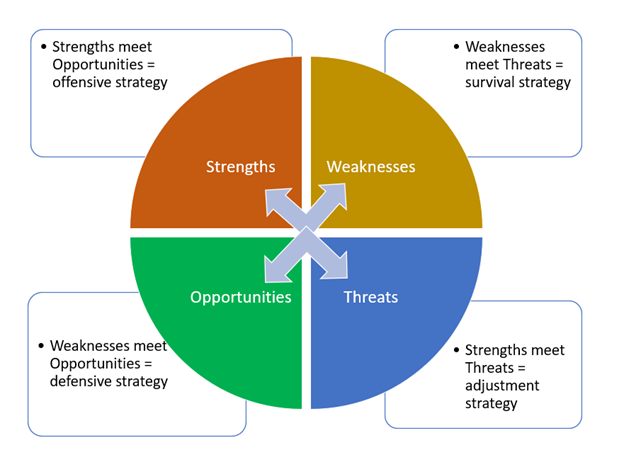
Official figures worldwide show that the number of businesses starting up is constantly rising. More and more people are turning to entrepreneurship, and business chiefs are predicting that small businesses are going to play a vital role in the future economy. According to the Small Business Administration (SBA) there are 30.7 million small businesses in the U.S. which account for 99.9 percent of all U.S. businesses.
There has been an enormous upheaval in the way we work in recent years, and this has sparked a surge of innovation in the technology sector to support the needs of new businesses, as the sector finds opportunities to develop new tools and services and expand their markets for existing products.
So, what are these technology tools that are changing the small business sector?
Tools for Market Research
One of the first steps in small business creation is conducting market research. Any business that wants to have an impact, whether a medical clinic, a small retail store or even a debt collection agency, will need to deeply understand their industry to find precisely who their market is. New software tools are constantly being developed to collect market research data, which in turn has led to a massive sophistication in tools to analyze this data. This market can be quite overwhelming for someone who has little expertise in software, so many tech companies have developed user-friendly tools at a range of prices that do not require much programming experience, if any.
Oracle is one of the most popular data analytics platforms – it is a cloud-based tool that runs on its proprietary database. This is ideal for those looking for a tool to take care of the analysis work, but such convenience has a high cost – prices do not start below $2,000. Other high-performance tools include Apache Spark, RapidMiner and SAS Visual Text Analysis – but the use of these tools requires some digital skills, and some carry a hefty price tag.
For those not looking to invest big money and who need to keep things simple, Google proposes its data analysis tool for free – over half of businesses use Google Analytics (GA) for their market research. Feedback shows that businesses choosing GA appreciate the platform’s user-friendly interface and rate it as a powerful tool that provides valuable insights about how customers interact with their business. Trade associations, industry groups and agencies, university publications and libraries or government websites offer a wealth of free statistical data from reliable, real-time or recent sources.
Tools for Online Marketing
Social media sites have truly transformed the market research landscape. For anyone wishing to reach out to potential clients, the fact that 77 percent of U.S. Americans have a social media profile cannot be ignored. Many businesses will need an online presence through social media if they want to connect with individual clients today, either as readers of content or participants in a public discussion thread or private chat. However, while these platforms allow businesses to reach large audiences, they can require a lot of time and energy to maintain, and any social media marketing campaign, however carefully cultivated, usually takes some time to deliver results.
Another area of essential online presence for businesses is owning a compelling, useful website. This is an area of software that rapidly expanded in recent years, where website tools have been created for a wide array of user skills and price tags. While you can outsource the task of designing and creating a website to a professional, some smaller businesses choose to take on the task themselves, and many tools are designed to be, above all, user-friendly. Ghost.org and Publii have become go-to options for many entrepreneurs who want static sites to showcase compelling content, such as blogs, and product offerings.
Google Web Designer is one of the most popular tools for creating flashy online advertisements and other marketing materials. It is free to download and users rate it as ‘easy to navigate and use’. Users looking for no-code design tools also go to Adobe XD, which allows the collaborative design of intuitive web pages and apps, but after a free starter plan it requires investment, with pricing starting at $9.99 per month.
For businesses that want to offer online shopping, website building tools like Weebly or Squarespace come highly recommended to create user-friendly, yet stylishly designed, drag-and-drop websites. These platforms often offer free trials for starters, but plans can quickly move up from approximately $10 per month.
Online Payment Solutions have also developed rapidly in recent years, and while PayPal remains the number one tool, some competitors have broken into the market by offering reduced fee rates, and faster transaction speeds. One rapidly expanding platform is Apple Pay, which uses advanced touch ID confirmation technology.
Tools for Financial Tracking
Any business owner looking to run a successful and profitable enterprise needs to plan their finances from the very beginning. This is easier in recent years, given current financial tracking tools. Small business accounting software platforms that come recommended are Sage and QuickBooks. Sage is an all-in-one solution that integrates with Microsoft software, offering a wide array of financial tools. Even though it is quite comprehensive it’s also a small and light desktop accounting application. On the downside, it does not yet feature a mobile app solution.
QuickBooks is rated on many sites as a popular choice for those looking for a more user-friendly interface, but it is also quite a costly tool that would require some investment. Keeping on top of finances can seem daunting at the beginning of any start-up enterprise, and very often even just the basic bookkeeping and tracking income and expenses already requires much time and effort —but efficiently and accurately tackling that work is necessary to have the data to analyze and answer high-level questions about profit, budget predictions, and the ability to expand and grow. Then there are free services like Nexacollect that help you to connect with a good collection agency to recover from your past-due invoices and improve cash flow.
Tools for Database Solutions
Small businesses and startups often don’t have the technical and financial means to manage database solutions. The good news is that they don’t have to.
Cloud-based databases offer a low-cost entry point. A small company entering the market can get a database and start storing their application data in it for the price of a lunch per month. Yes, you can get a database for less than $10 a month, with no strings attached!
Nowadays, businesses don’t need to worry about database servers. Backups, software updates, and security patches are all taken care of. Even with clients in Europe, America and Asia, a business benefits from geo-replication which keeps data close to its clients. That results in the application response time not being affected by distance and the laws of physics.
Adding database features obviously starts affecting that monthly payment, but businesses only pay if they need them. What’s more, they can manage all that via user-friendly web portals. No coding or scripting is required to manage access, users, or the creation and deletion of databases from their browser.
One of the best features of cloud-based applications is that small-companies don’t have to hire a database developer who knows the SQL database language. NoSQL databases, such as Google CloudFirestore, offer schema-free, scalable, document-centric models that are ideal for any application.
Regardless of whether you own a pet store, a sandwich shop or a smart building technology firm, NoSQL databases offer flexible and high-performance database models to cater your needs.
Escaping reliance on spreadsheets is easy with no-code app-building tools like Tadabase and Appy Pie. A business can quickly create forms, tables, and other UI designs customized to its needs, where employees or customers enter data in a pleasant, user-friendly way, and the validated data goes directly into an organized database.
Finally, with the advent of personal robot assistants (“bots), there is increased anticipation of how far the office bot assistant will take over tasks normally reserved for human assistants. There are many experiments underway to develop basic and complex assistants. One such project built a smart office assistant to deliver food and documents to employees, map and navigate the office and even have a chatting interface. The price tag for these is currently way too high but the aim is to develop more efficient and less expensive bots in the near future.
Technology is now intricately linked to any modern business development. Anyone looking to start their small business in 2020/21 will without a doubt search for what technology tools and software will most help them along the way.


